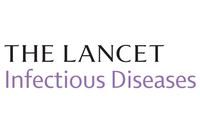Personal View in Lancet Infectious Diseases
The Disposable Microsystems group is excited to announce its latest publication, a Personal View article, entitled “A three-level model for therapeutic drug monitoring of antimicrobials at the site of infection” in Lancet Infectious Diseases.
Bacterial antimicrobial resistance poses a significant global threat, leading to increased mortality rates, prolonged hospital stays, and soaring healthcare expenses. This crisis is exacerbated by inadequate incentives for researchers to develop new pharmacological compounds and the widespread misuse of antibiotics.
An essential factor, contributing to the success or failure of antibiotic treatment is the variation in antibiotic tissue penetration, especially among critically or chronically ill patients. This work highlights the importance of real-time, site-specific analysis of drug concentration for clinicians to gain insights for the optimization of the antibiotic therapy and facilitate a successful therapy.
In this Personal View, Noé Brasier (ETH Zurich), H. Ceren Ates, Can Dincer (University of Freiburg – Disposable Microsystems group) and colleagues introduces an innovative three-level therapeutic drug monitoring (TDM) model each with its own specific focus: (1) the upstream level, which refers to the blood; (2) the on-site level, which pertains to the target site of infection (SOI; for example, epithelial lining fluid in cases of pneumonia); and (3) the downstream of the SOI (e.g., breath in cases of pneumonia). The model aims to establish a vital connection between blood-based drug measurement and the drug levels at SOI to tackle the escalating levels of bacterial antimicrobial resistance and minimizing the potential harm caused by toxic drug concentrations.
Furthermore, this paper outlines the essential clinical and technical steps required for the development of wearable sensing platforms tailored specifically to site of infection applications. With continued advancements in wearable sensing platforms, we envision a future where antimicrobial treatments are optimized through real-time, site-specific drug concentration information, thereby significantly advancing the global fight against bacterial antimicrobial resistance.
The Personal View can be accessed under: Brasier N., Ates, H. C., Dincer, C. et al. (2023): A three-level model for therapeutic drug monitoring of antimicrobials at the site of infection. Lancet Infect. Dis. DOI: 10.1016/S1473-3099(23)00215-3
Contact:
Hatice Ceren Ates
FIT Freiburg Center for Interactive Materials and Bioinspired Technologies & Department of Microsystems Engineering (IMTEK)
Phone: 0761/203-95123
e-mail: ceren.ates@mail.fit.uni-freiburg.de
Dr. Can Dincer
FIT Freiburg Center for Interactive Materials and Bioinspired Technologies & Department of Microsystems Engineering (IMTEK)
Phone: +49 761 203-95129
e-mail: dincer@imtek.de
Twitter: @CanLab_DE / @CanDincer83
Kerstin Steiger-Merx
Representative Marketing/PR
Faculty of Engineering
University of Freiburg
Tel.: 0761/203-8056
E-Mail: steiger-merx@tf.uni-freiburg.de

